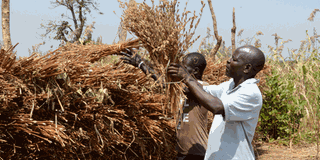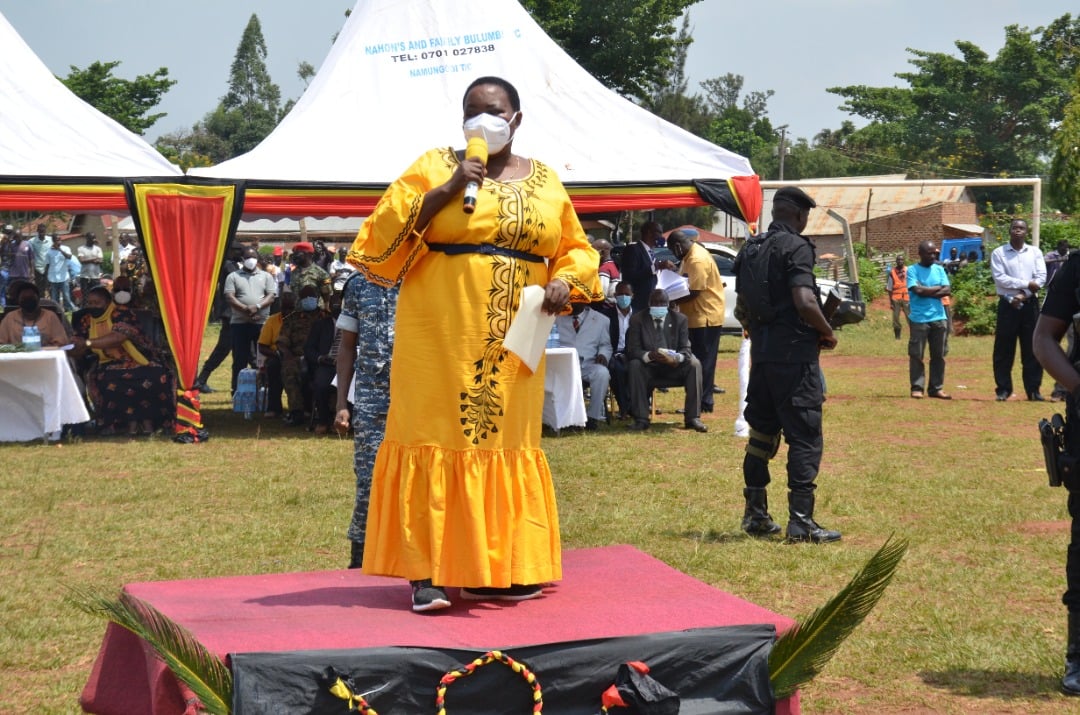Prime
Will Parish Development Model work?

Simsim farmers in Gulu District.The PDM is intended to lift Ugandans from the subsistence to money economy. Below, the seven pillars of PDM. PHOTO/GEORGE KATONGOLE
What you need to know:
- The Parish Development Model (PDM), launched by President Yoweri Museveni aims to lift 17.5 million Ugandans in 3.5 million households out of poverty through the total transformation of the subsistence households into the money economy.
The Parish Development Model, officially launched in February, is the government’s latest drive toward poverty alleviation.
Momentum around it gained last month, June 2022, and various governmental and political leaders have been traversing the country and promoting the project.
In this plan, the country’s nearly 10,600 parishes are to get seed money of Shs100 million per parish.
The money, as a revolving fund, goes direct to the Sacco accounts in each parish and from this fund, households can borrow money and invest it in income generating activities.
Each head of a home registered in the local Sacco will receive Shs1milion.
For some of the more capital-intensive parish projects such as mechanised agriculture, 280 tractors will be available.
There are even statements by senior government officials that households will be monitored using the Global Positioning System (GPS) to ensure that they don’t misuse the funds allocated to them.
On the face of it, the government really means well in launching the Parish Development Model.
The idea is that true, enduring growth is best achieved not by top-down state policy, but rather bottom-up, grassroots growth.
Predictably, pro-government people and groups have welcomed it as the key to ending Uganda’s extreme poverty.
Destined for failure?
Just as predictably, Opposition political parties, civil society groups, and many in the media have dismissed it as being one more project destined for failure.
Will this be just the latest in a series of projects, from the Northern Uganda Rehabilitation Programme of the mid-1990s to the “Entandikwa” programme of the late 1990s to be launched with fanfare but ultimately fail, or will it be the start of a new chapter in Ugandan history?
This, then, is a critique of the Parish Development Model.
Most activity so far is about “sensitisation” and expressions of intent, being spearheaded by mostly political leaders.
While to mobilise the rural population usually requires the direct input of local and national political figures, that is not enough.
Most of these are already well-known political figures and so their word will be well received.
The rural population is already struggling under biting poverty, so they don’t need much persuading to embrace the programme, given the substantial amounts of money being talked about, relative to rural incomes.
The limitations of the project, however, start at this point.
Because Uganda’s economy is about 80 percent agricultural, it is inevitable that most of the money given to households will be invested in farming, livestock, and other areas related to the land. So far, there is no mention of key technical people in all this -- animal husbandry officers, agricultural extension workers, forestry officers, machine technicians, and financial advisers.
ALSO READ: FY2022/23 Budget: What’s in it for you?
It is not enough to do what various governments have done since the 1960s, urging the population to grow more cotton, grow more coffee, grow more tea as a way to develop the economy. Rural farmers must be advised on what crops to grow, how to control weeds, worms and pests, how to water them during the dry season, how to use manure to enrich the soil, how to deworm the livestock, fight off ticks and harmful flies.
Long-term investment might include planting trees, but this too requires advisers in forestry officers.
This section of technical agricultural, veterinary and forestry officers more or less started collapsing in Uganda in the early 1990s.
Several years ago, photos of President Museveni in Mukono demonstrating to local residents on how to use drip irrigation became the butt of jokes.
Expertise needed
Politically, the President had to be seen to take the lead in this, but it was not necessary.
Demonstrating efficient and cost-effective irrigation methods should be the routine duty of local area agricultural officers.
No matter how many Cabinet ministers and LC officials urge the rural population to participate in the Parish Development Model, somebody with expertise on the ground must be involved on a day-to-day basis.
The fact that so far there is no mention of these field officers shows the poor conception by the government of the project.
The secondary phase is more complex and requires quite a bit of planning and expertise.
There have to be stores, silos and warehouses waiting right now to receive the expected bumper harvest from the Parish Development Model.
The increased production of mangoes, potatoes, maize, coffee, tea, yams, cassava, bananas, millet, sunflower and so forth will have to be received, recorded, weighed, and stored somewhere at the parish or the nearby district headquarters.
Finally, as this analyst stated in the Sunday Monitor last month in response to President Museveni’s State of the Nation address, there has been an emphasis on the investment or supply side to the economy over the last 30 or so years, not enough time, thought, and resources have been invested in working out the demand or marketing side to the economy.
The government often talks a lot about accessing regional markets in eastern Africa, but not much detail of this is laid out.
Apart from South Sudan, Uganda’s border neighbours are almost self-sufficient in the basic agricultural and livestock products that Uganda produces.
Uganda can’t control the political situation in South Sudan and how an eruption of armed clashes could cut off the market to Ugandan products.
A year or so ago, Ugandan maize exports to Kenya were halted by the Kenyan and Burundi governments on account of the low quality and health risk of the maize.
Ugandan milk and other dairy products also faced an import ban in Kenya.
These factors will come into play if all the Parish Development Model does is to urge rural households to grow more crops, without providing the additional supervision and quality control required to export them to neighbouring countries.
Detailed planning
One of the effects of the 39 percent of the households reported to be in absolute poverty suddenly starting to grow or rear a higher volume of crops and livestock is that prices will fall, affecting both incumbent farmers and the new entrants.
So, if the government or the officials in charge of the Parish Development Model do not work out the details of regulating supply and price, Uganda could end up with a glut of vegetables, fruits and poultry products that nobody wants to buy or can afford to.
Rural economic development is a complex process that requires detailed planning, subject-matter expertise, coordination between government headquarters and local government branches, coordination between and within different government agencies, and the employment of qualified and dedicated field technical officers.
The NRM government is not the best example of this kind of non-political mobilisation and planning.
At the start of the nationwide Covid-19 lockdown in 2020, the government mooted the idea of supplying radio and television sets to families for the electronic education of children. Nothing came of that.
In the Industrial Area of Kampala and in various towns of the country are tractors that were part of the late 1980s drive to provide tractors to farmers.
These tractors are now rusting, because the entire supply and maintenance chain from spare parts to servicing was not given much thought.
It would be nice to give the government the benefit of the doubt in this latest drive to tackle rural poverty.
Unfortunately, though, the signs are not encouraging that the Parish Development Model will succeed for the reasons outlined above.





